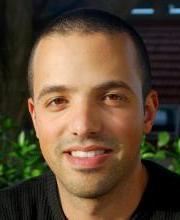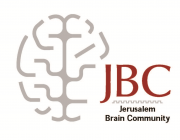
Itamar Harel
Itamar Harel is currently an assistant professor at the Department of Genetics, the Hebrew University of Jerusalem. He earned his bachelor in Life Science at the Ben Gurion University of the Negev in 2005, and his PhD in Developmental Biology at the Weizmann Institute of Science with Prof. Eldad Tzahor in 2012. During his PhD Itamar used the mouse and chicken model systems and have identified a novel regulatory network underlying cardiac and head muscle development, regeneration, and disease. For his postdoctoral training, Itamar switched fields (and model systems), and studied the Biology of Aging with Prof. Anne Brunet at Stanford University. During his time at Stanford, he developed a platform for rapid exploration of aging and diseases in a naturally short-lived vertebrate, the African turquoise killifish.
Itamar was supported by many prestigious fellowships, including the Damon Runyon, the Human Frontier Science Foundation, and the Rothschild fellowships. Itamar is highly involved in science education, via academic and popular lectures, by writing popular science, as well as leading training courses and scientific conferences. These activities have been recognized by several organizations, including the Ilan Ramon Award for Outstanding Academic Achievements (2010), the Israeli-American Council Award of Excellence and Community Leadership (2015), and elected to the Zuckerman STEM Leadership Program (2018).
Research:
Aging is the primary risk factor for many human pathologies, including cardiovascular and neurodegenerative diseases, cancer, and diabetes. Yet, understanding how organisms age remains one of the biggest challenges in biology. In the past 25 years, experiments in short-lived model systems (yeast, worms, and flies) have revolutionized the way we perceive aging – revealing that the aging rate itself can be manipulated by genetic and environmental interventions. However, the lack of short-lived vertebrate models for genetic studies has significantly limited our understanding of vertebrate aging, including the role of vertebrate-specific genes (e.g. IL8 and APOE), organs (e.g. bones and blood), and physiological processes (e.g. complex behaviors and adaptive immunity). To this end, we have developed a comprehensive genetic platform for rapid exploration of aging and disease in the shortest-lived vertebrate model, the African turquoise killifish, including a sequenced genome, CRISPR/Cas9-based genome editing, and mutant fish for many aging- and disease-relates genes.
Taking advantage of this exciting platform, we are trying to answer fundamental questions in biology, such as 1) why is aging such a strong driver of disease? 2) are there vertebrate-specific aging mechanisms? 3) what is the molecular basis behind the outstanding diversity of lifespan between different animals (which can reach 500-fold difference among vertebrates). To explore these questions, we are developing a variety of disease models, as well as using cutting edge approaches (including single-cell technology, live imaging, mass spectrometry, and genome-editing).

